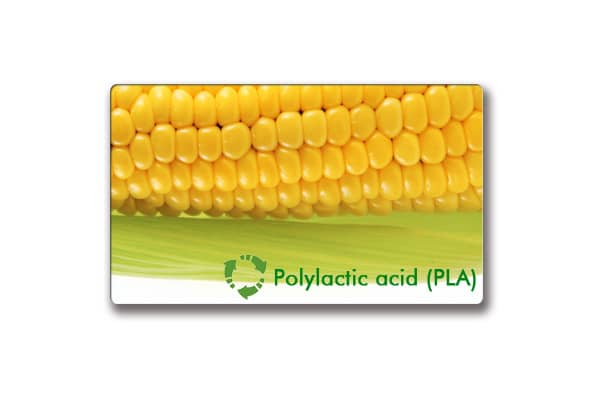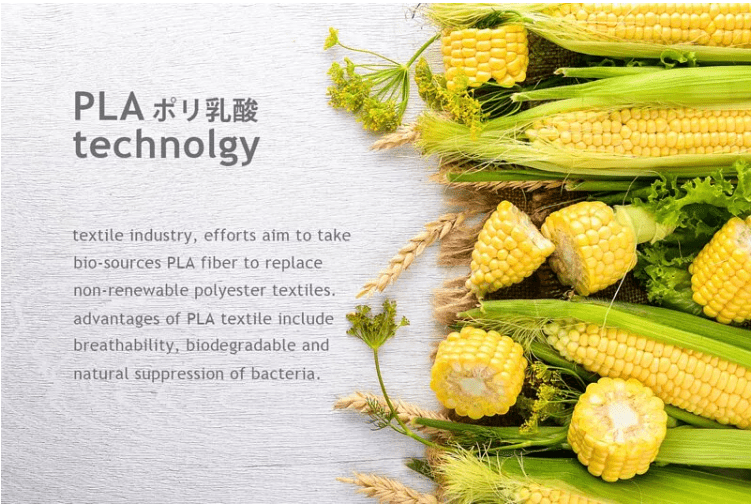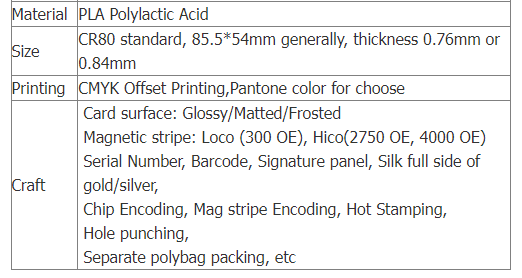Eco-friendly PLA Polylactic Acid Card
Polylactic Acid, most commonly known as PLA, is a polymer made from renewable resources. Contrary to other thermoplastics which are petroleum-based, some of the raw materials used for PLA’s production include corn starch, tapioca roots, or sugarcane. Its




